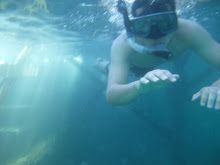Sea Based X-Band Radar
The Sea Based X-Band Radar 9SBX) is a part of Ground-Based Mid-course Defense (GMD) deployed by Missile Defense Agency (MDA).The radar system is mounted on on a Russian built CS50 semi-submersible twin hulled oil platform designed by Norwegian consortium.
Construction of the platform began at Vyborg shipyard before being converted for GMD purposes at Texas.Dynamic positioning capability enable precision station keeping in potential adverse sea states and weather conditions.
The SBX consist of four major operating system : vessel , X-Band Radar (XBR), In-Flight Interceptor Communication Sytem (IFICS) Data Terminal (IDT) and the Ground Midcourse-Based Defense (GMD) Communication Network (GCN).
The platform is 116m in length, 85m high and weighing 50 000 tonnes with complements of 75 to 85 person onboard.Primarily SBX task is to provide target discrimination by identifying missile warhead from decoys and followed by presicion tracking of the identified warhead.
Placing the radar system on a mobile platform at sea enhance missile defense capability where the radar can be deployed to cover any area on earth and its radar range is not restricted to curvature of the earth compared to land based radar systems.
The platform has many smaller radomes for various communications tasks.The central, large dome encloses and protects a phased array, 1,814 tonnes (4,000,000 pound) X-band radar antenna.
The phased array radar antenna itself is described as being 384 square meters. It has a large number of solid-state transmit-receive modules mounted on a hexagonal flat base which can move ±270 degrees in azimuth and 0 to 85 degrees elevation (although software currently limits the maximum physical elevation to 80 degrees).
The maximum azimuth and elevation velocities are approximately 5-8 degrees per second. In addition to the physical motion of the base, the beam can be electronically steered off bore-sight.
The phased array radar on the SBX derived from its AEGIS counter-part designed and built by Raytheon Intergrated Defense Sytems for Boeing with major difference of the system is that AEGIS use S-band to track target instead of X-band.
The platform has an upper deck capable to carry the top structure of the hull 20 000 tons, and is adapted for installation of the both systems of dynamic positioning and passive positioning by means of anchors, and combined system of stabilization of the platform.
The design has been made to give maximum of flexibility for arrangement of alternative topsides depending on the end use of the platform; -as a drilling platform or as a floating production platform, or any other use. Thus the bare deck platform has a completely flat top deck ("main deck") on top of an enclosed double bottom structure of sufficient height to give the necessary strength for a deck load (topside weight) of about 20,000 tones.
To meet the huge electrical power consumption of the radar systems and the platform propulsion system on the SBX, six 12 cylinder Caterpillar diesel generator capable of producing 3.2 megawatts with future addition of two more generators to maintain the platform full operational capability in case of power failure.
Deployment of SBX in the Pacific region had increase MDA layered defense capability against missile threats.SBX is tasked to monitor any imminnent ballistic missile threats mainly from North Korea and China.
-come to sea and see for yourself-




No comments:
Post a Comment